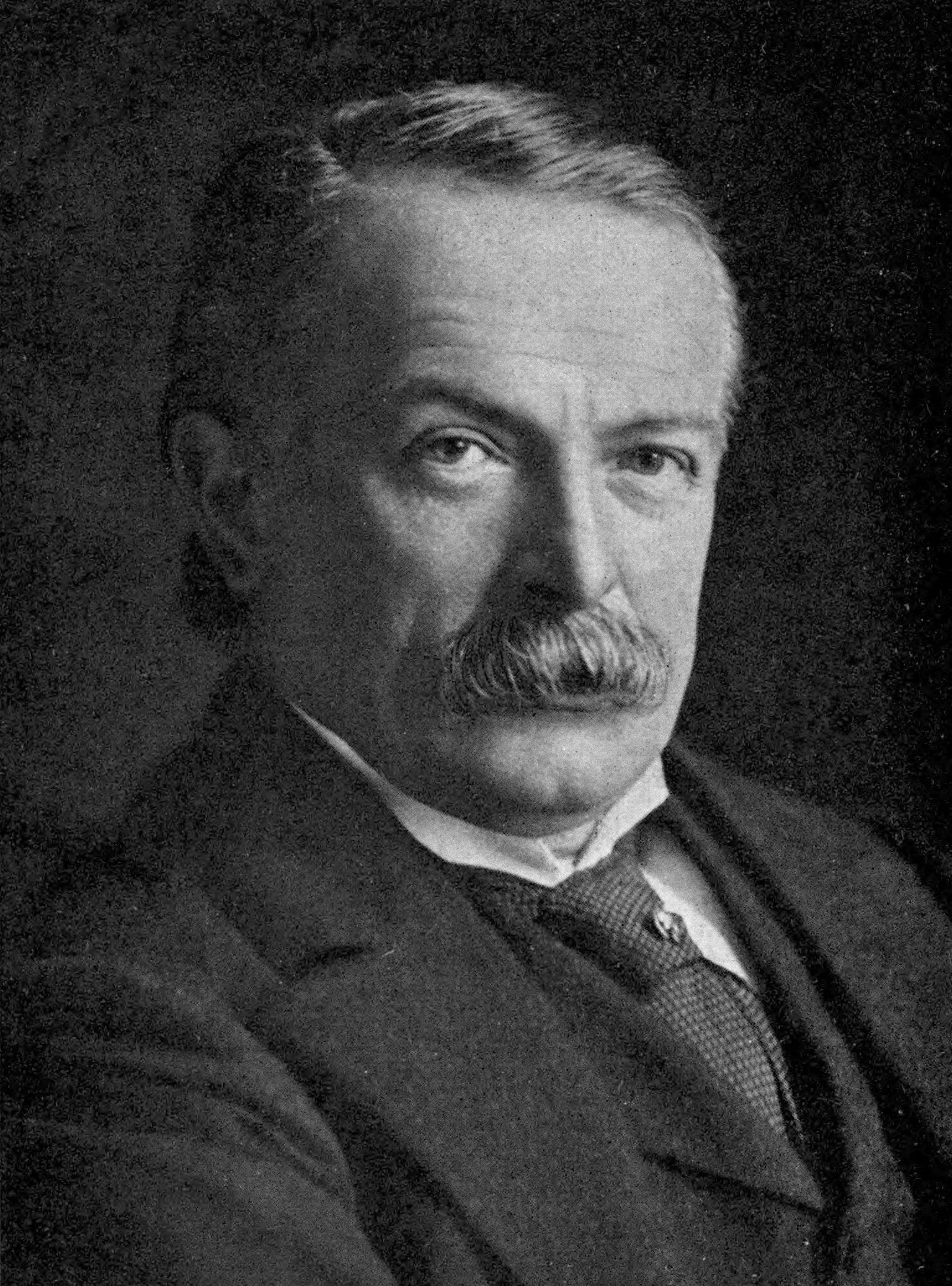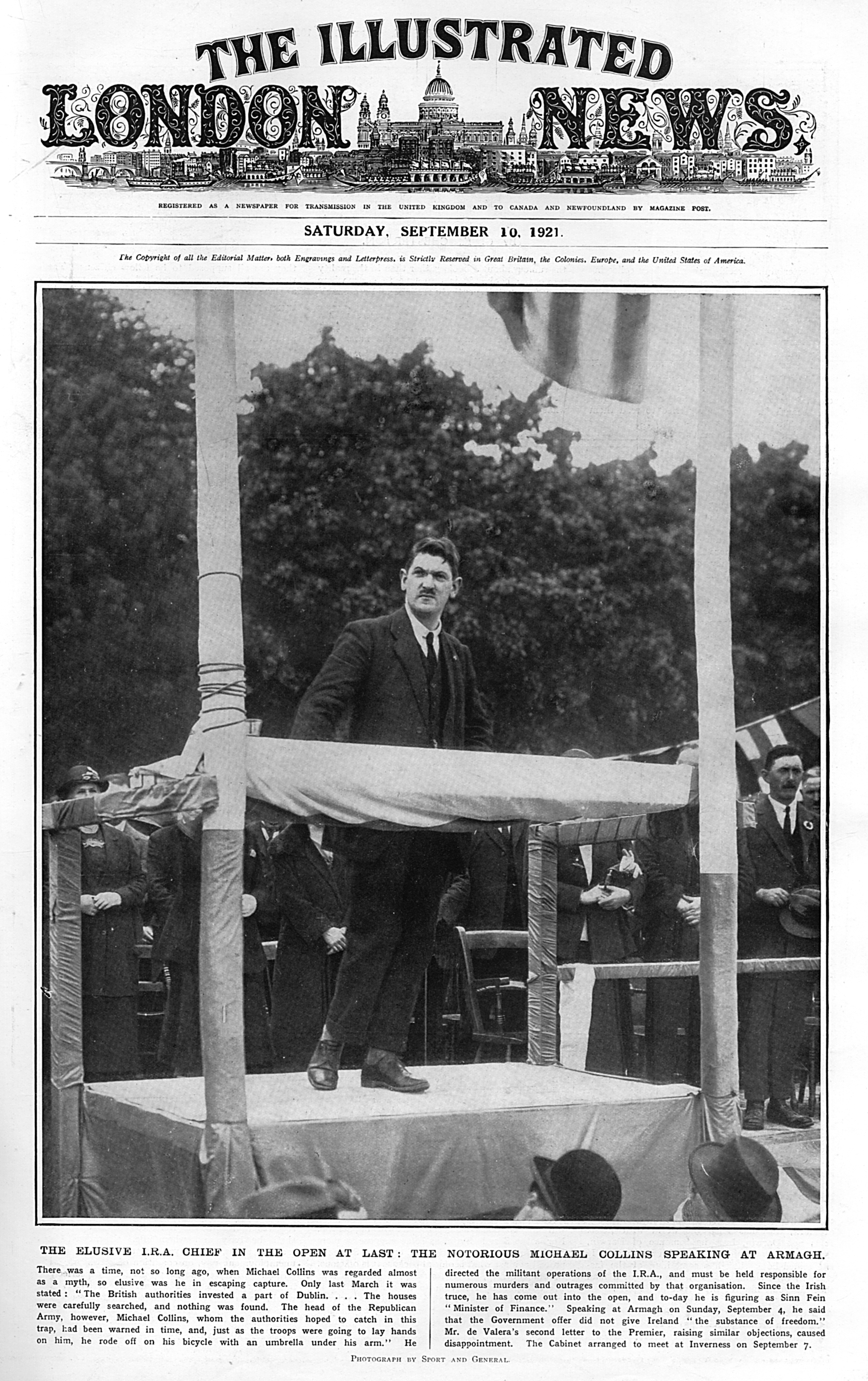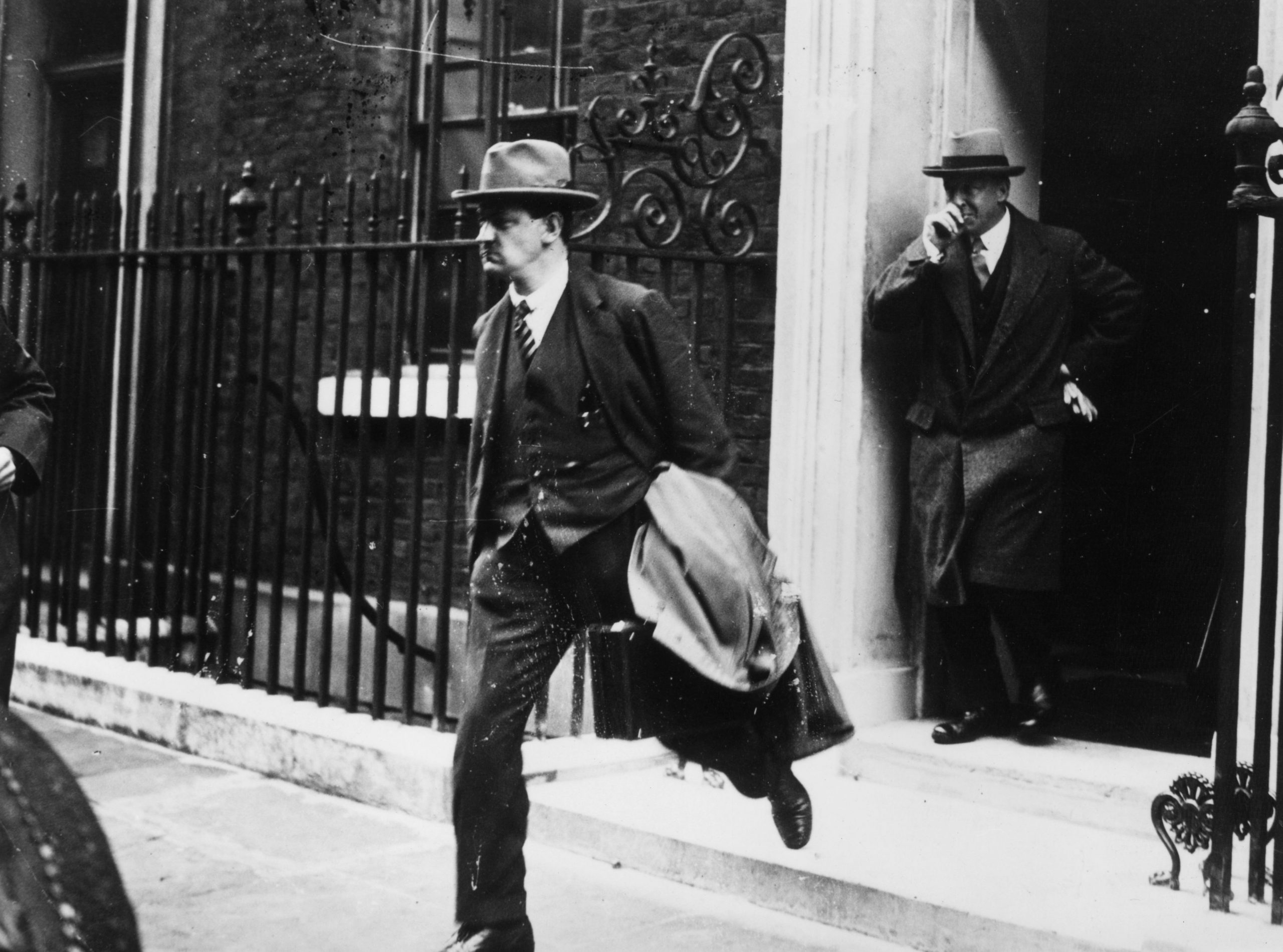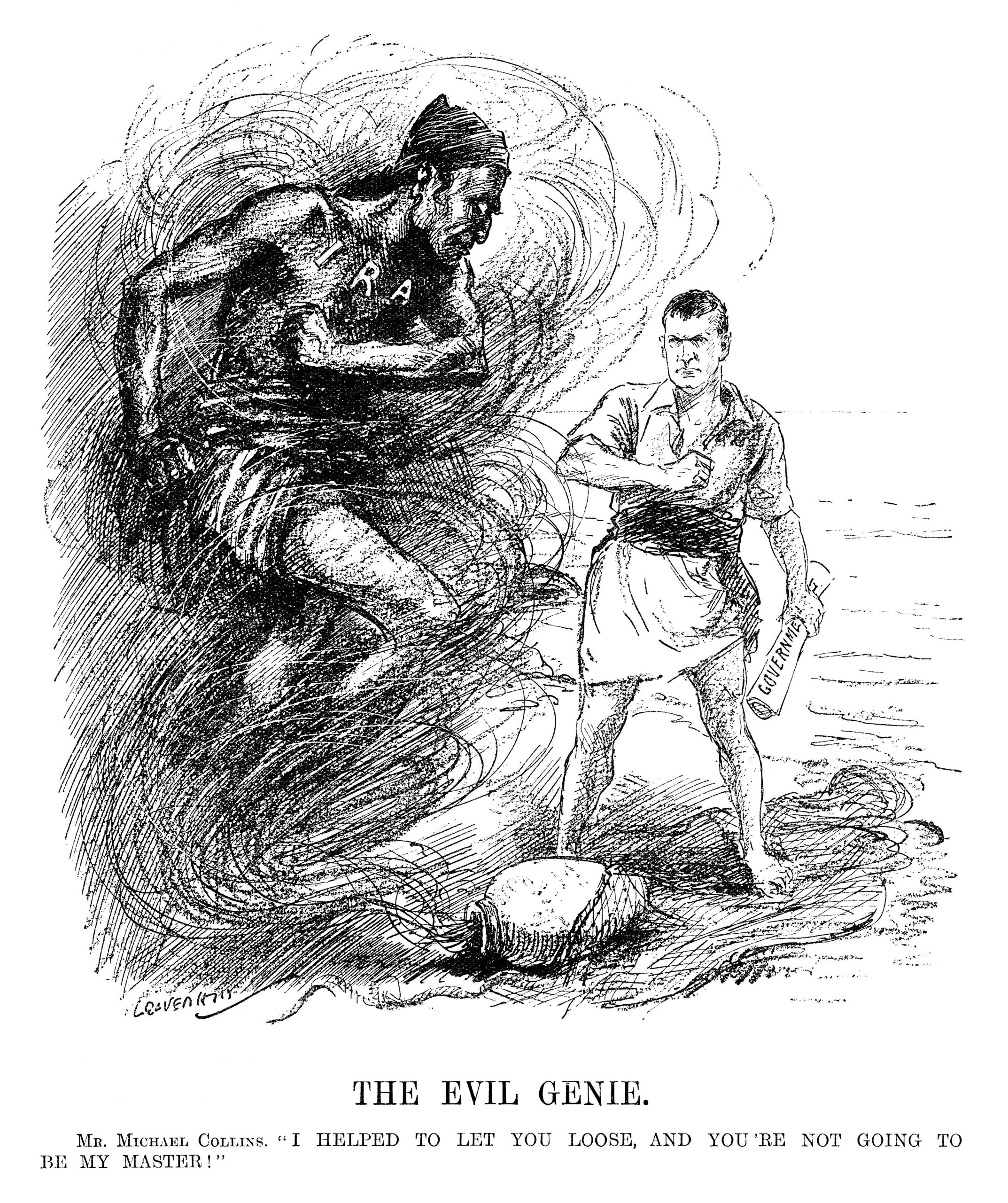Michael Collins and the British press
Published in Features, Issue 4 (July/August 2020), Volume 28Collins took an interest in how he was portrayed in the press and understood the value of good publicity.
BY ALISON MARTIN
By the time of his assassination in August 1922, Michael Collins had become an increasingly popular subject of media attention. Media interest in Collins was not limited to Ireland, however, as there were also references to him in the international press. Stories of Collins’s exploits, both real and alleged, also became popular fodder for the British press. Nevertheless, up to this point relatively little has been written about British newspaper coverage of Collins.
During 1917 there were a few passing references to Collins in the Irish press. Several Irish newspapers referred to his oration at the funeral of Thomas Ashe, president of the supreme council of the IRB, who had died on hunger strike in Mountjoy prison. One of the earliest references to Collins in the British press occurred in April 1918, when it was reported that Collins, who was then secretary of the Irish National Aid and Volunteers’ Dependants’ Fund but was also involved with the IRB, had been arrested on O’Connell Bridge by detectives of the ‘G’ Division on account of allegedly provocative comments made during a speech at an after-Mass rally in Legga, Co. Longford. Although Collins was a relatively minor public figure at the time, the incident received some coverage in British and Irish newspapers. Other events, such as his election as Sinn Féin MP for South Cork in December 1918, were also reported in the British press. Nevertheless, such references would have been relatively insignificant to the public, especially taking into consideration wider world events.
Press coverage during the War of Independence

Above: Prime Minister David Lloyd George—referred to the IRA as a ‘murder gang’. British newspapers adopted a similar tone, although some became critical of the government’s policy in Ireland.
In June 1919, several months after the outbreak of the War of Independence, Collins officially assumed the position of director of intelligence of the Irish Volunteers. By mid-1919 he had also become president of the IRB supreme council, alongside his role as the Dáil’s minister for finance. It was important, therefore, that the British should have as little information about Collins as possible. As the conflict escalated, however, references to Collins in the press become more frequent. Although the British authorities gradually began to acquire more information about Collins, there was still a certain amount of ambiguity surrounding him. In December 1920, for instance, the Times referred to him as ‘the alleged Commander-in-Chief of the Sinn Féin army’. Several British newspapers adopted a tone similar to that of senior British politicians such as Lloyd George, who had famously referred to the IRA as a ‘murder gang’. An article printed in the Taunton Courier and Western Advertiser on 4 May 1921 referred to Collins as ‘the chief of the gunmen’. Similar references were made in other British newspapers.
At the same time, however, despite the fact that the British government attempted to control the way events in Ireland were being reported, a number of newspapers, such as the Manchester Guardian and the Times, became increasingly critical of the British government’s policy in Ireland. Moreover, it was not just sections of the British press that portrayed Collins in a less than favourable light. In the aftermath of Bloody Sunday, Collins wrote to Eamon Duggan, a solicitor who had been the IRA’s first director of intelligence, to protest about newspapers like the Freeman’s Journal, a national newspaper printed in Dublin, describing him as ‘one of the murder gang’.
Collins evidently took an interest in how he was being portrayed in the press, and he also appeared to understand the value of good publicity. As the Dáil’s minister for finance in 1919, he appeared in a short film to promote the republican loan bonds campaign, although the escalation of hostilities ensured that it could not be shown in Ireland. The following year he gave a rare interview to the American journalist Carl Ackerman. Peter Hart has argued that Collins placed more trust in American journalists than in those from Britain. Ackerman, however, would later pass on information about Collins to the British authorities.
As was the case in other countries, false stories about Collins circulated in the British press. On 2 February 1921 the Daily Sketch reported that Collins had been shot off a white horse whilst trying to escape from Burgatia House on the outskirts of Rosscarbery, Co. Cork. Collins was particularly amused when his intelligence people intercepted a coded message asking for confirmation of the story, as he had not been within a hundred miles of the location. Other stories in the press had a stronger basis of truth. Collins was often described by journalists as elusive, as he had many narrow escapes from the British authorities. On certain occasions, though, it may have suited the British press to play up this image, as it helped to justify why he had evaded capture for so long. Such stories certainly helped to enhance the level of public interest in Collins. Hence it is perhaps unsurprising that a few days after the truce of July 1921 brought an end to the War of Independence Collins received a telegram from a London publisher offering him £10,000 for his memoirs. He ultimately declined, stating that the time was ‘not yet opportune’.
Armagh and the treaty negotiations in London

Above: The Illustrated London News reports on Michael Collins’s much-publicised visit to Armagh in September 1921. (Mary Evans Picture Library)
In September 1921 Collins made a much-publicised visit to Armagh, where several months earlier he had been elected TD for the southern part of the county. The British and Irish press reported enthusiastically on his visit, with several British newspapers prioritising the story. The Illustrated London News, for instance, ran the headline ‘THE ELUSIVE IRA CHIEF IN THE OPEN AT LAST: THE NOTORIOUS MICHAEL COLLINS SPEAKS AT ARMAGH’. If Collins had hoped that the amount of media interest in him would eventually subside he was to be sorely disappointed, as the following month he was asked to travel to London as part of the delegation that would negotiate an agreement with Britain. Despite the fact that the delegation contained other important figures such as Arthur Griffith, the founder of the Sinn Féin movement, Collins’s arrival in London was the most eagerly anticipated. When the Irish delegation arrived at Euston Station in early October, the Irish Times reported that ‘there was keen disappointment’, not least among the legion of photographers, when it became known that Collins was not with them.
Collins, who had travelled to London separately from the rest of the delegation, was first spotted by the press on 10 October. According to the Irish Times, he rushed out of 15 Cadogan Gardens, the house where he had taken up residence, and jumped into a waiting car without making any comment. The following morning, however, the Daily Express printed a purported interview with him in which a journalist had asked Collins how he had managed to get to 22 Hans Place, where most of the Irish delegation had taken up residence, without being seen by the press. Collins also apparently expressed indignation at the fact that the newspaper had previously referred to him as a murderer. In a letter to his fiancée Kitty Kiernan the following day, however, Collins maintained that he had never said such a thing. He also added that ‘Newspaper men are inventions of the devil’.
A choreographed public image?

Above: Collins leaving Downing Street in characteristic haste. Was he perhaps deliberately projecting the image of ‘a dynamic man of action’? (Getty Images)
It is evident from Collins’s letters to Kitty that he kept up to date with the British press coverage of the negotiations, which formally began on 11 October. In a letter written on 17 October, he informed Kitty that the previous day’s photograph of him had been published. A few weeks later he promised that he would send her copies of the latest English newspapers. Whether Collins enjoyed any of the media attention is difficult to ascertain. One cannot help but detect a hint of excitement in his letter to Kitty on 21 November, telling her that he had been asked to do a sitting for the high-society magazine The Tatler. On other occasions, however, he seemed eager to avoid undue attention. An article printed in the Leeds Mercury on 20 October referred to him as ‘Shy MC’ owing to the fact that he had refused to get up and speak at a reception in the Ulster Hall hosted by the Irish-Ireland societies. Over the course of nearly two months of negotiations, various photographs were taken of Collins rushing in and out of Downing Street trying to avoid the press. In many ways this is unsurprising. Collins had a busy schedule and would later be photographed dashing in and out of meetings at various other venues, including the Mansion House in Dublin. John Regan has argued that by rushing past the camera Collins may have been attempting to control his image, as this allowed him to project himself as ‘a dynamic man of action’ who was too preoccupied with his political work to speak to the press.
Press coverage after the signing of the Treaty

Above: ‘I HELPED TO LET YOU LOOSE AND YOU’RE NOT GOING TO BE MY MASTER.’ (Punch, 12 April 1922)
After nearly two months of negotiations, the Anglo-Irish Treaty was signed at 2.20am on 6 December 1921. According to the terms of the treaty, a 26-county Irish Free State would be established. The Free State would be a self-governing dominion within the British Commonwealth, but it still fell short of being the independent republic that some had hoped for. It is therefore unsurprising that when a journalist waiting outside 10 Downing Street asked Collins whether he had anything to say after the treaty had been concluded he replied, ‘Not a word!’ News that a treaty had been agreed was generally welcomed by the British press. In the days that followed, short profiles of the signatories appeared in many British newspapers. Satirical cartoons, including some of Collins, also featured in the press. One of the most famous, ‘The Joy-Jig-Jazz’ by David Lo, appeared in the Star on 8 January 1922. It depicts Collins and Lloyd George dancing a jig after the signing of the treaty. The fact that it features Collins rather than any of the other Irish delegates demonstrates that from the British point of view Collins had played the most important role in the talks.
When Collins returned to Ireland, the British press continued to report on significant events, such as the ratification of the treaty and the establishment of the Provisional Government in January 1922. Over the next few months Collins, who was now chairman of the Provisional Government, was also depicted in the British satirical magazine Punch. By mid-1922 he was being pictured as a determined leader, trying to uphold the Provisional Government in spite of the challenges being posed. A cartoon printed on 12 April shows a defiant Collins facing down the IRA ‘evil genie’, with the caption ‘I HELPED TO LET YOU LOOSE AND YOU’RE NOT GOING TO BE MY MASTER.’
In June 1922 the Irish Civil War began. The following month, Collins resigned as chairman of the Provisional Government in order to become commander-in-chief of the Free State forces. Just six weeks later he was killed in an ambush at Béal na Bláth, Co. Cork, on 22 August. Collins’s assassination was reported in newspapers across the world. Unsurprisingly, the tone of the press coverage in Britain during the days that followed differed from the coverage in the Free State. Nevertheless, it was generally acknowledged that Collins’s death was a loss to the Irish people. The Manchester Guardian reported on 28 August 1922 that ‘Collins touched the mind of Ireland in such a way that people feel for him as for a youthful friend whose career is lost to them’. The Times also acknowledged on 24 August that the deaths of Collins and Arthur Griffith, the president of Dáil Éireann who had died less than two weeks earlier, had been a ‘double blow’ for Ireland. Moreover, although there were some undertones of criticism, it was suggested that Collins and Griffith ‘had more personality than most of their colleagues’.
Naturally it was difficult for the British press to be overly sentimental about Collins, and any hint of romanticism over his death was often overridden by practical concerns. An article in the Pall Mall Gazette on 28 August took care to reassure readers that his death was unlikely to result in the British government changing its policy towards Ireland. It also emphasised that the prime minister, Lloyd George, was unlikely to curtail his holiday in Wales as a result of Collins’s death.
Alison Martin is an independent researcher with an MA in Irish History from Queen’s University, Belfast.
FURTHER READING
T.R. Dwyer, ‘I signed my death warrant’: Michael Collins and the treaty (Dublin, 2006).
P. Hart, Mick: the real Michael Collins (London, 2005).
C. Osbourne, Michael Collins: himself (Cork, 2003).
















